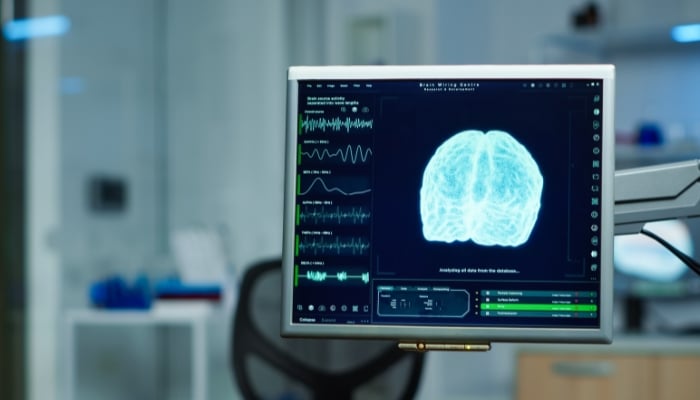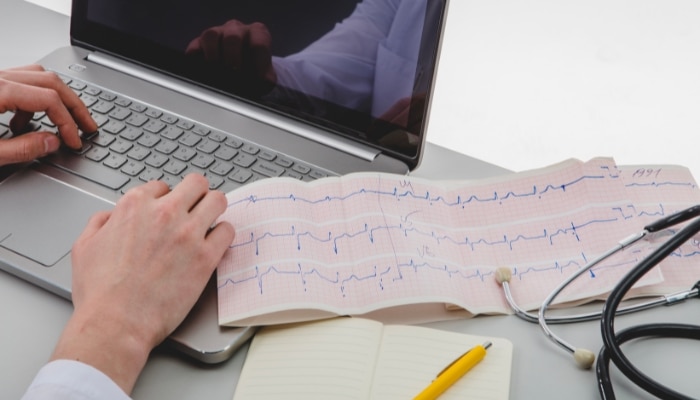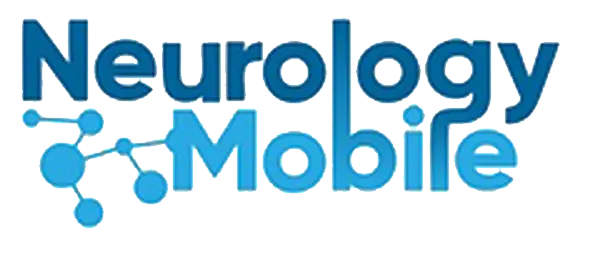4 min read
Understanding Needle Electroencephalogram (EEG): Insights and Applications
Have you ever wondered how doctors look inside the complex world of our brainwaves? The Needle Electroencephalogram (EEG), a groundbreaking procedure, offers a window into our neural activities. But what exactly is this technology, and how does it transform our understanding of the brain? Let’s dive into the fascinating realm of EEG with needles and uncover its secrets.

- What is a Needle Electroencephalogram (EEG)?
- The Fundamentals: How Does the EEG with Needles Work?
- Clinical Applications: Why Use EEG with Needles?
- The EEG Procedure with Needles: What to Expect?
- Interpreting the Results: What Do They Tell Us?
- Conclusion: Embracing the Future: The Transformative Impact of Needle EEG in Neurology
What is a Needle Electroencephalogram (EEG)?
Needle Electroencephalogram (EEG), a specialized form of brainwave monitoring, involves the use of fine needles to capture electrical activity within the brain. This technique, although sounding a bit intimidating, is a critical tool in neurological diagnostics.
The Fundamentals: How Does the EEG with Needles Work?
The fundamentals of the Electroencephalogram with Needles involve a detailed process where precision and technology come together to provide vital insights into brain activity. Here’s how it works:
1. Preparation and Placement: The first step involves preparing the patient for the procedure. This includes cleaning the scalp and marking specific locations for needle placement. These locations are carefully chosen based on standard brain mapping techniques to ensure accurate data collection.
2. Needle Insertion: Once the scalp is prepared, small, sterile needles are gently inserted at the marked locations. These needles are much finer than typical medical needles and are designed to minimize discomfort while providing optimal contact with the scalp.
3. Connection to the EEG Machine: Each needle is connected to an EEG machine via thin wires. This machine is the core of the procedure, as it is responsible for recording the electrical impulses transmitted by the brain.
4. Detection of Brain Activity: As the brain operates, neurons communicate through electrical impulses. These impulses create patterns of activity that the needles detect. The EEG machine amplifies these signals and converts them into visual data, often displayed as waveforms on a monitor.
5. Continuous Monitoring: Throughout the procedure, the patient’s brain activity is continuously monitored. Depending on the purpose of the EEG, patients may be asked to engage in specific tasks or exposed to various stimuli to evoke certain types of brain activity.
6. Data Recording and Analysis: The EEG machine records the brain’s electrical activity over a period, capturing data that will be analyzed by neurologists. This data provides insights into the brain’s functioning, helping in diagnosing and understanding various neurological conditions.
Clinical Applications: Why Use EEG with Needles?
The Clinical Applications of EEG with Needles are extensive and play a vital role in modern neurology. The use of needles in EEG enhances the precision and depth of brain activity analysis, making it an invaluable tool in diagnosing and managing various neurological conditions. Here’s a closer look at why EEG with needles is so important in clinical settings:
1. Enhanced Diagnosis of Epilepsy: Traditional EEGs are often used in the diagnosis of epilepsy, but EEG with needles can provide more detailed data. This method can detect subtler abnormalities in brain wave patterns that may not be captured by standard EEG, especially in cases of focal seizures or when pinpointing the specific region of seizure origin is crucial.
2. Brain Tumor Detection and Monitoring: In cases of brain tumors, EEG with needles can help in determining the tumor’s impact on brain activity. This method can identify changes in brain waves caused by tumors, assisting in the assessment of the tumor’s location, size, and even its potential growth over time.
3. Sleep Disorder Analysis: For sleep disorders, such as narcolepsy or sleep apnea, EEG with needles can provide comprehensive data about brain activity during different sleep stages. This is crucial for understanding the nature of these disorders and formulating effective treatment plans.
4. Assessment of Other Neurological Issues: EEG with needles is also used in diagnosing and monitoring other neurological conditions like dementia, encephalitis, brain injury, and stroke. By providing a detailed map of brain activity, it helps in understanding the extent and nature of these conditions.
5. Pre-surgical Evaluation: In neurosurgery, particularly for epilepsy surgery, EEG with needles is used for pre-surgical evaluation. It helps in precisely locating the areas of the brain responsible for seizures, ensuring that surgical interventions are as targeted and effective as possible.
6. Research and Development: Beyond clinical diagnosis, EEG with needles is a valuable tool in neurological research. It provides researchers with detailed data on brain function, aiding in the development of new treatments and understanding of neurological diseases.

The EEG Procedure with Needles: What to Expect?
The EEG Procedure with Needles is a specialized process that, while sounding intricate, is meticulously designed to ensure patient comfort and safety. Understanding what to expect can help alleviate any apprehensions. Here’s a step-by-step guide to the procedure:
1. Pre-Procedure Consultation: Before the EEG, a consultation usually takes place where the neurologist or technician explains the procedure, its purpose, and addresses any questions or concerns. This is also when patients can discuss their medical history and any medications they’re taking.
2. Preparation for the Procedure: On the day of the EEG, patients are advised to wash their hair to remove oils and residues but avoid using hair products like gels or hairspray. They might also be instructed to avoid caffeine or specific medications.
3. Settling In: Upon arrival at the clinic or hospital, patients are made comfortable in a quiet room, either seated in a reclining chair or lying down on a bed. It’s important for the patient to be relaxed, as muscle tension can interfere with the results.
4. Placement of the Needles: The technician or neurologist will begin by carefully placing small, sterile needles at specific points on the scalp. These points are usually marked in advance. The needles are connected to the EEG machine via wires. Though the thought of needles can be unsettling, they are very fine, and their placement is typically only mildly uncomfortable.
5. Recording Brain Activity: Once the needles are in place, the EEG machine is turned on to start recording the brain’s electrical activity. Patients are asked to remain still and sometimes may be asked to perform tasks like breathing deeply or looking at a flashing light to stimulate brain activity.
6. Duration of the Procedure: The actual recording time varies but typically lasts about an hour. During this time, the patient’s brainwaves are monitored and recorded for later analysis.
7. Post-Procedure Care: After the recording is complete, the needles are gently removed, and any adhesive residue is cleaned from the scalp. Patients can usually return to their normal activities immediately after the procedure.
8. Follow-Up: The recorded data is analyzed by a neurologist, and a follow-up appointment is usually scheduled to discuss the findings. This is when patients receive information about their brain activity and any potential neurological issues.
Interpreting the Results: What Do They Tell Us?
The Interpretation of EEG with Needles Results is a sophisticated process where neurologists analyze the intricate patterns and rhythms captured during the procedure. This analysis is crucial for understanding various aspects of neurological health and identifying potential issues. Here’s an overview of what these results can tell us:
1. Identifying Abnormal Brain Activity: One of the primary purposes of an EEG with needles is to detect abnormal brain activity. This includes unusual patterns, spikes, or waves that may indicate neurological disorders. For example, specific patterns may be characteristic of epilepsy or seizure disorders.
2. Localization of Brain Activity: The EEG with needles can provide detailed information about the location of brain activity. This is particularly useful in pinpointing areas of the brain affected by conditions like epilepsy, brain tumors, or stroke. Precise localization aids in treatment planning, especially in surgical cases.
3. Assessing Brain Function: The results can help assess overall brain function. For instance, they can reveal whether the brain’s electrical activity is generally normal or if there are areas of decreased or increased activity, which could indicate various conditions, including encephalopathy or brain injury.
4. Monitoring Progress and Response to Treatment: For patients undergoing treatment for neurological conditions, EEG with needles can be used to monitor the brain’s response to treatment over time. Changes in the EEG patterns can indicate whether the treatment is effective or if adjustments are needed.
5. Diagnosing Sleep Disorders: In sleep medicine, EEG with needles can provide insights into the brain’s activity during different sleep stages. Abnormalities in these patterns can help diagnose sleep disorders, such as narcolepsy or sleep apnea.
6. Research and Understanding Brain Function: Beyond clinical diagnosis, these results are valuable for research purposes. They contribute to a deeper understanding of how the brain functions in various states, both healthy and diseased.
7. Patient-Specific Insights: Every individual’s brain activity is unique. Therefore, EEG with needles results offer personalized insights, which is crucial in tailoring treatment plans to the specific needs and conditions of each patient.

Conclusion: Embracing the Future: The Transformative Impact of Needle EEG in Neurology
In conclusion, the Needle Electroencephalogram (EEG) stands as a pivotal advancement in the field of neurology. It’s far more than a mere diagnostic device; it’s a key that unlocks the complex mysteries of the brain’s electrical landscape. With its ability to delve deeply into the brain’s electrical activity, the EEG with needles provides invaluable insights that are crucial for diagnosing, treating, and understanding a multitude of neurological conditions.
This technology is not just about identifying abnormalities; it’s about exploring the very essence of our brain’s function. It aids neurologists in painting a detailed picture of neuronal activity, allowing for a more nuanced understanding of the brain in both health and disease. The precision and depth of information gathered through this method are instrumental in developing targeted and effective treatment strategies, ultimately leading to better patient outcomes and improved quality of life.
Remember, this journey into the brain’s electrical symphony is just beginning. As you ponder over the intricacies of the EEG with needles, consider its impact on the future of neurological care. Stay tuned for more enlightening insights into the world of neurology!
